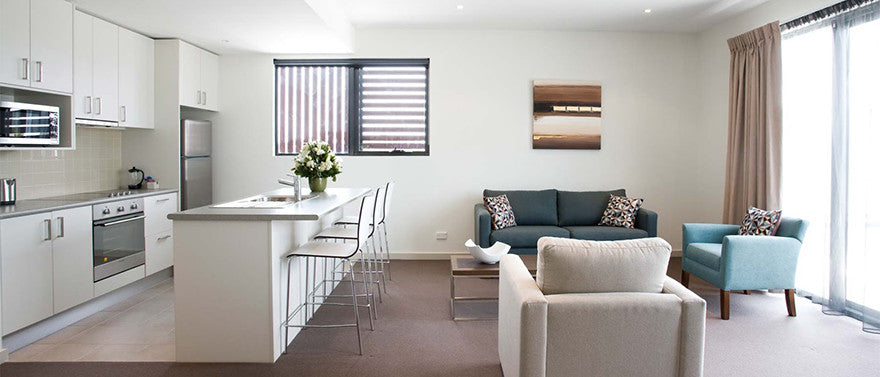What to leave and expect...
When it comes to selling your home there are no particular rules and laws you have to stick to regarding the fixtures and fittings within the house. This issue is very contentious to say the least, really because of the fact that there isn’t any law that actually specifies what should be left in the home and also what should be removed.
Different vendors and buyers will all have different expectations of what fixtures should be included in the sale of the home and for this reason it is vital you clarify in the early proceedings of any sale. By law the vendor is not obliged to leave any fixtures or fittings in the house however the onus is on them to make it clear what will be taken and what will stay.
Usually you can avoid any conflict by including an inventory in the sales contract of the homes price, within in this it should state what will be left and also what will be taken when the vendor moves. If an inventory is not created the usual assumption is that all fittings will be removed and all fixtures will stay, unless this is stated elsewhere in the sales contract.
This means that if any fixture is removed without the buyer being pre-warned the vendor could end up with a small court case against them, resulting in them having to pay for the cost of replacing the fixture in question.
What is a fitting or fixture?
There are not actually any set definitions for what is a fixture or in hindsight what a fitting is. However the general understanding is that a fixture is usually any item that is bolted to the floor or walls within the home, while a fitting is something that is seen to be as free standing or hung by a nail or a hook. Below I have created a list which shows what items will usually fall under each of the categories.
Fittings
– Carpets
– Beds/sofas or other free standing pieces of furniture such as wardrobes
– Lampshades
– Televisions, also television aerials and satellites
– Paintings and mirrors which are not bolted to the walls only hung or screwed
– Curtains and Curtain Rails
– Free standing ovens, fridges, washing machines etc.
– Pool Tables, table tennis tables and other free standing entertainment tools
Fixtures
– Central heating appliances such as boilers and radiators
– Sockets
– Kitchen Units
– Bathroom units
– Built in wardrobes or cupboards (if they use a wall to form one side or incomplete without)
– Wall Paintings
– Light fitments
What is the fuss all about?
Although the odd towel rail here and there doesn’t make too much of a difference to the overall value of a house, fixtures and fittings can in fact add thousands of pounds in total to the monetary worth of a property, a big difference.
If the vendor decided to take all fixings and fittings such as radiators, boilers, wardrobes, telephones ect. They could in fact be taking around £15,000 worth of appliances from the buyer. This is why it is well worth taking the time to clarify what is going to be left in the home and what isn’t when the sale of the property goes through. It is vital for the vendor to ensure they will not face any legal action later on and also the buyer is happy with what they’re paying for.
The inventory
I have already gave you a brief introduction into the inventory that could help agreeing on what fixtures and fittings will leave or stay in the home. Here is an example of how it may be set out.
Room Fixture/Fitting Included in purchase (tick or cross)
General Sockets
Door Bell
Door Knocker
Interior door furniture
Exterior door furniture
Double glazing
Window fitments
Living room/bedrooms etc Curtains/Curtain rails
Pelmets
Blinds
Carpets
Lamp shades
Wall fittings
Heaters
Gas/electric heaters
Burglar/smoke alarms
Others (specify)
Kitchen Cooker
Cupboards
Fridge/freezer
Microwave
Spice/cutlery racks
Dishwasher
Washing machine
Utensils
Bathroom Carpet
Medicine cabinet
Mirrors
Towel rails
Fitted shelves
Cupboards
Shower or bath unit
Toilet fittings
Holders
In the garden Shed
Greenhouse
Trees, plants etc.
Lights
Garden equipment
Furniture (specify)
Ornaments etc.
Negotiation techniques
Getting the most for the price of a house or building usually all depends on the negotiation techniques that are used.
You need to remember to stay calm throughout negotiations, remember that showing frustration could be a sign of weakness. Do not become heated if things aren’t working out, so many deals fall through when negotiating becomes hard.
Do all negotiating face to face, this way both parties can gauge responses and everybody is fully sure of what fittings and fixtures will stay and which will leave.
Ensure that you decide which items will be classed as fixtures and which as fittings, this will avoid later confusion.
If you are planning on buying the house, you should make a list of what you need before negotiations take place. This means you won’t waste time arguing about a fridge that you were going to replace at a later date anyway.
When any negotiations are agreed write it down immediately, this ensures you avoid any later dispute.
You need to be friendly throughout this process, you have more chance of getting a better deal if the other party likes you.
Don’t be unreasonable – You are very likely to come out of these proceedings worse off if you seem unreasonable.
